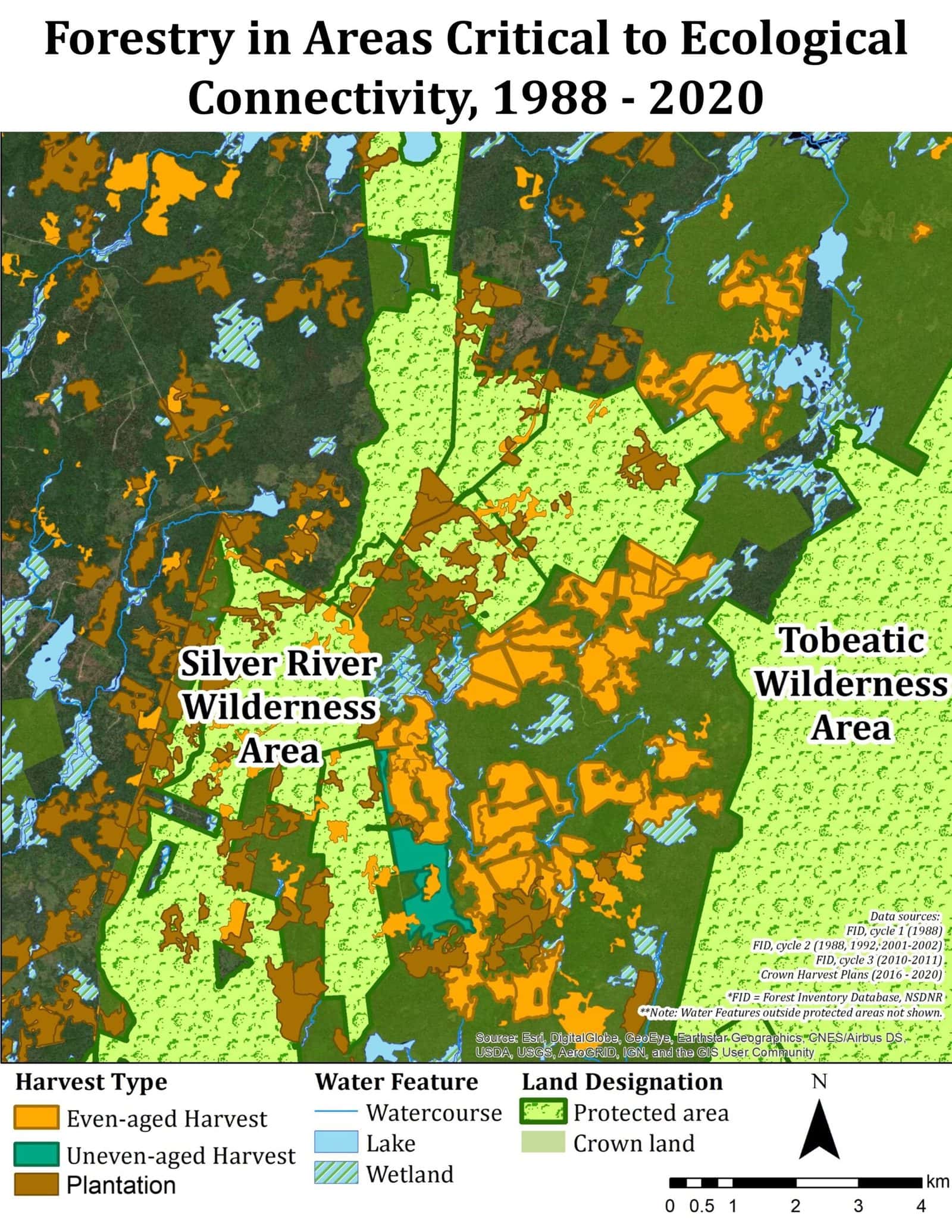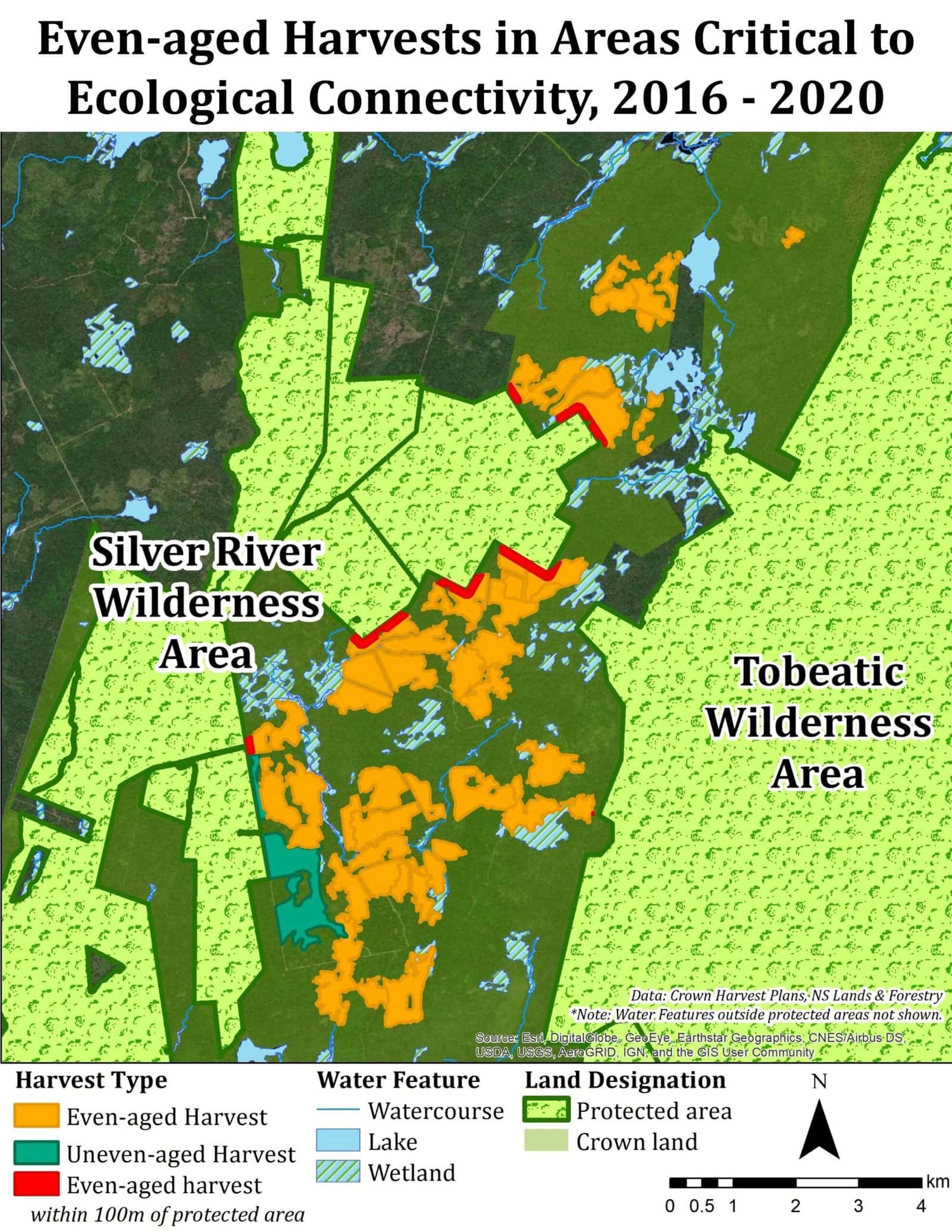KJIPUKTUK (Halifax) – For over six weeks now a group of naturalists has camped out in the woods of Digby County to defend the habitat of the threatened mainland moose against clearcutting. There may be as few as 100 mainland moose left in Nova Scotia.
Moose need healthy, contiguous, and biodiverse forests to thrive. In Digby County that connectivity between the Tobeatic Wilderness Area and the Silver River Wilderness Area is being steadily eroded by even-aged harvests.
A picture is worth a thousand words. A map, created by conservation GIS expert Shanni Bale, and used here with her permission, clearly shows why so many people are raising the alarm.

Bale has mapped harvesting activity in the corridor between the two wilderness areas since 1988, and it’s been a busy spot, to say the least.
To create her maps she used GIS datasets for all of three cycles of the Forest Resource Inventory as well as the Crown Harvest Plans, maintained and distributed by the department of Lands and Forestry.

The maps show the high levels of harvesting activities over the years, and especially over the last four years in the crown lands in question.
Alarming also is where Bale delineates, on the second map, in red, where clearcutting has occurred within 100 meters of the Silver River Wilderness Reserve, ignoring the prescribed setbacks. According to the harvest plans, about half of these cuts occurred post-Lahey, Bale says.
Earlier the Nova Scotia Advocate interviewed Mike Lancaster of the Healthy Forest Coalition about these threats to the mainland moose.
“One of the main concerns for conservation in Nova Scotia is habitat connectivity and the threat presented by the fragmentation that’s occurring. There’s been some infiltration of roads coming from both the north and the south of the area, and it seems that the plan is for these roads to eventually connect,” Lancaster said.
“Right now it’s one of the few areas in Nova Scotia that remains non-fragmented, and regardless of the presence of moose, it’s important to maintain these unfragmented corridors in Nova Scotia, to provide a habitat for the species at risk, moose being the example in this case. Clearcutting exacerbates everything even more.”
The real problem is roads, Lancaster said. “When a clearcut happens within a couple of decades you’ll have a forest come back. Mind you, it might not be as healthy, but eventually you’ll get there, in 100 years or so. But with the construction of a road we’re not talking about 100 year recovery, we’re talking potentially several centuries of recovery to see such an area reclaimed by a healthy ecosystem.”
Meanwhile, a rally on Sunday to show support for the hardy souls camping out in the area drew some 70 supporters. Given the COVID-19 situation in the Halifax area I could not come down, but Facebook posts suggest the event was a huge success.
See also: Halifax police ends occupation of government office in support of mainland moose habitat protection
With a special thanks to our generous donors who make publication of the Nova Scotia Advocate possible.
Subscribe to the Nova Scotia Advocate weekly digest and never miss an article again. It’s free!



